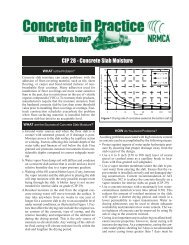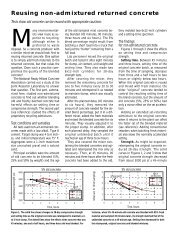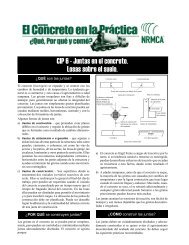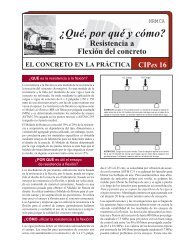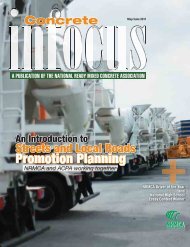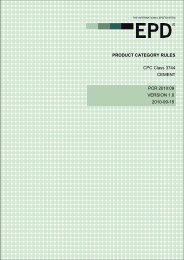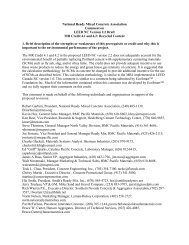Fall 2004 - National Ready Mixed Concrete Association
Fall 2004 - National Ready Mixed Concrete Association
Fall 2004 - National Ready Mixed Concrete Association
Create successful ePaper yourself
Turn your PDF publications into a flip-book with our unique Google optimized e-Paper software.
feature<br />
OSHA<br />
Record Keeping<br />
Requirements for<br />
Injuries and Illnesses<br />
By Rick Maidens, Director of Safety and Risk Management, US <strong>Concrete</strong>, Inc. and<br />
Thomas Harman, Director of Safety Compliance, NRMCA<br />
In January 2002, the Occupational Safety and Health Administration<br />
(OSHA) changed its requirements for recording occupational injuries<br />
and illnesses. Forms, new cases and general reporting criteria as well as<br />
other categorical items were redefined. With only a few exceptions, the<br />
new standard streamlined the process and made the procedure easier to<br />
understand. None of the changes affected how incidence rates are calculated.<br />
However, one change in particular affected the severity rate, which<br />
is considered the indicator of how serious an injury/illness is. The severity<br />
rate is an arbitrary measure and is based on the days away from work<br />
from all injuries. After two years, the changes have been viewed as positive<br />
by most workplace safety and health practitioners.<br />
Forms<br />
The designation for the forms changed and a form was added. The<br />
current OSHA 300 log corresponds with the previously required<br />
OSHA 200 log, and the OSHA 300A summary is a new form that<br />
combines the injury/illness information located on the 300 log. The<br />
injury report is called the OSHA 301, and this has replaced the 101<br />
supplemental report of injury. This form details items about an injury<br />
such as cause and preventive measures.<br />
The greatest change is in the OSHA 300A summary log. The format<br />
is such that the user is allowed to easily tally the information in a<br />
way that facilitates incidence rates computation. The only additional<br />
piece of information that is needed and now is required by the standard<br />
to be kept by the employer is the number of employee hours.<br />
The posting requirement for the 300A summary log is now ninety<br />
days, compared with either 28 or 29 days, depending on whether it is a<br />
leap year. Posting now must be done from February 1 through April 30<br />
of each year.<br />
New Cases<br />
What constitutes a new case in the new standard A new case occurs<br />
when an employee has not previously experienced an injury or illness<br />
of the same type in the same part of the body. Another example is<br />
when an employee experiences an injury or illness at work and has<br />
completely healed from that condition, but some event or exposure at<br />
work once again occurs that is of the same type and in the same part of<br />
36 ı FALL <strong>2004</strong>



